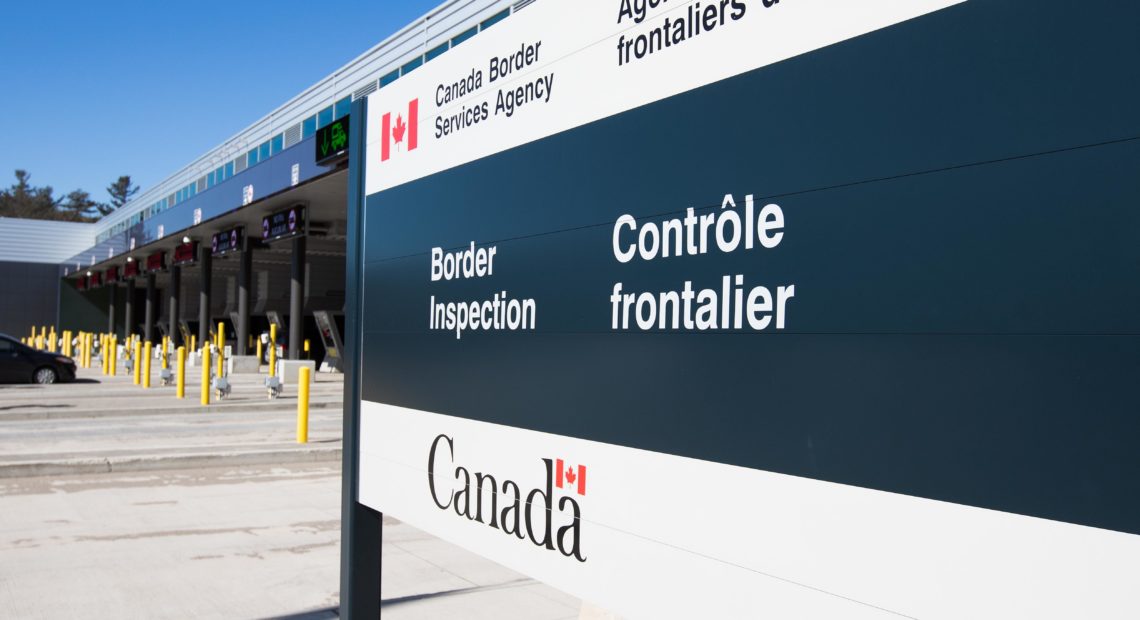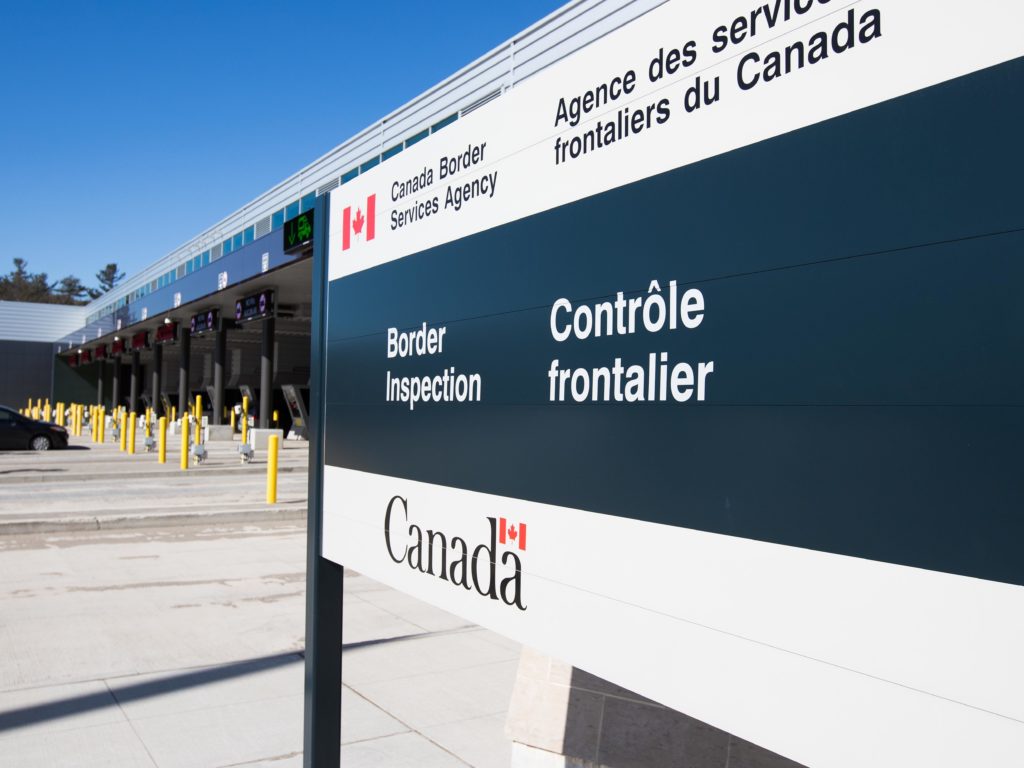
Reporter’s Notebook: Crossing Into Canada Before Coronavirus Closes The Border
BY SELENA SIMMONS-DUFFIN
It’s Monday, March 16, there are about 4,500 confirmed COVID-19 cases in the United States. I head to work, attend meetings. My daughter’s school is closed for two weeks.
Fast forward, it’s Friday night, March 20, I am in a hastily packed car with my family barreling towards the Canadian border. There are 15,219 confirmed cases of COVID-19 in the U.S. NPR is requiring remote work for all but a handful of essential workers and has warned the rest of us we can not even stop by the office to pick up any stray items. My daughter’s school is closed until the end of April, but it might be much longer. The president mentioned August as the month when this might start to turn around. Even if we can’t see the future, we can see Kansas, which just two days before, made the call to cancel the rest of the school year.

A vehicle enters a Canadian border station at the U.S./Canada border after the two countries closed their border for all non-essential travel in Lansdowne, Ontario, on March 22, 2020. CREDIT: Lars Hagberg/AFP via Getty Images
Our family’s reasons for leaving are simple: space on an otherwise-empty family farm for our kids to roam, and the promise — after our intended 14-day quarantine — of our family helping with childcare so we can work remotely. Being a health reporter now seems to requires a whole new level of commitment and I’m determined to keep telling the stories of this pandemic. We are profoundly lucky to be in this position. We are also Canadian citizens, and there’s an instinct to try to be close to home in a time of crisis.
So: 11 hours in the car with a 20-month old, a four year old and enough clothes and infrastructure packed to last us through the spring. All along the drive, we see reminders of this new reality: a woman beside us at a red light, sitting at the steering wheel of her sedan wearing a blue face mask; most rest stops cordoned off; at the frozen yogurt shop, disposable gloves required for everyone and it’s take-out only. At a gas station convenience store, a woman buying a 12 pack of Coors and a pack of cigarettes mentions to the cashier restrictions imposed by New York’s governor, and says it all sounds crazy. “If I could stay home right now, I would,” he replies.
Every few miles for hours on end, we see those black signs with flashing orange letters that usually warn of road work, imploring drivers: STAY HOME. STOP THE SPREAD. SAVE LIVES.
We have Canadian passports, we’re not tourists, we know we should be fine, but the trip still feels risky. The U.S.-Canadian border is closing by mutual agreement between the two countries to suppress the spread of the virus. Only essential travel is allowed, and Canadians who winter in the U.S. have been told to come home. We pass countless RVs with Canadian plates.
It turns out, the last few miles are practically empty and there’s no line at the border. The border agent wears black plastic gloves and what looks like an N95 respirator mask. He asks us the usual questions — how many in the car, where do you live, where are you headed? Then, new ones — does anybody have any symptoms like a cough or fever, when was the last time anybody had a cough or a fever? We answer truthfully that no one has had a fever, though the baby had a cold a few weeks ago. We will quarantine when we get home for two weeks to be safe.
The hardest question is this one: How long will you stay? We laugh and say our kid’s school is closed for a month and a half, so at least that long. He waves us through with a sheet to read about the coronavirus. The truth, of course, is that no one has any idea how long all of this will go on.















